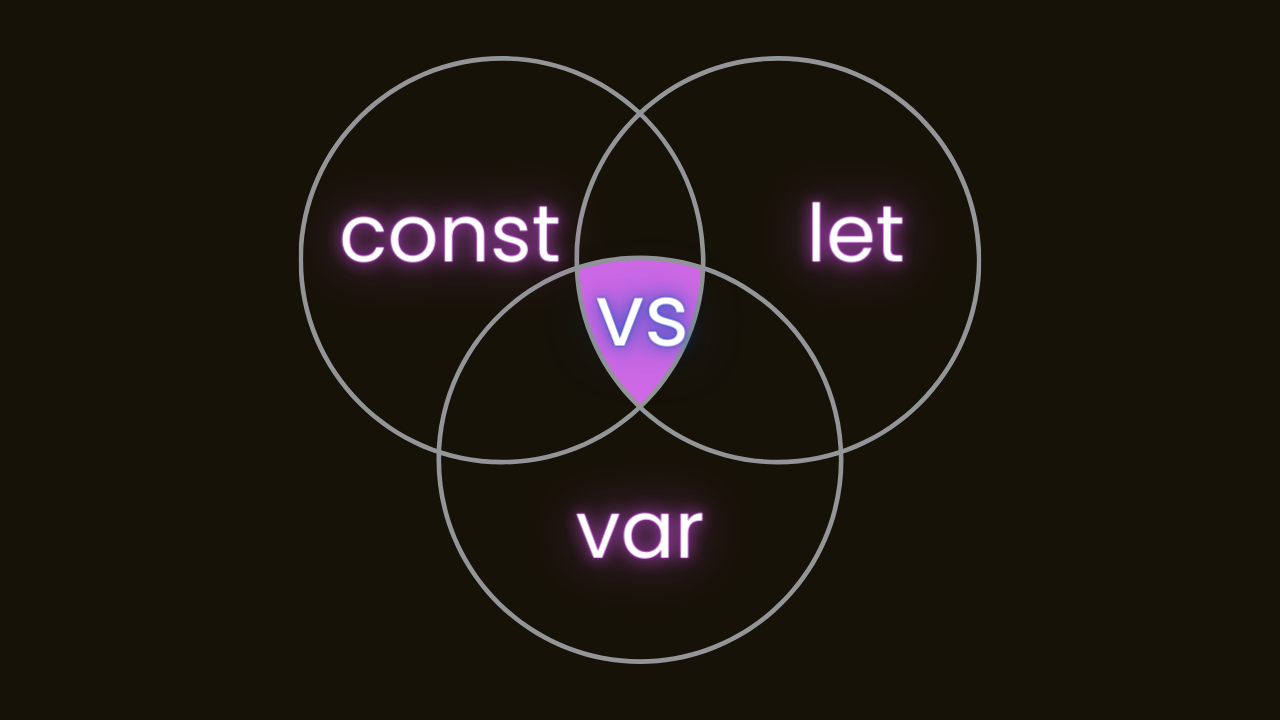Var, let and const
 Mohamed
Mohamed
JavaScript provides three primary ways to declare variables: var, let, and const. While they may seem similar at first glance, each has distinct characteristics and use cases.
Each one of these has its own rule, and if you understand them well, it may help to avoid mistakes.
var:
var was the original way to declare variables in JavaScript. It has function scope, meaning variables declared with var are accessible throughout the entire function they are declared in, regardless of block scope.
Example:
function exampleFunction() {
if (true) {
var num = 24;
}
console.log(num); // Output: 24
}
exampleFunction();
let:
Introduced in ES6 (ECMAScript 2015), let allows block scoping. Variables declared with let are limited to the block (enclosed by {}) in which they are defined.
Example:
function exampleFunction() {
if (true) {
let num = 24;
console.log(num); // Output: 24
}
console.log(num); // Error: num is not defined
}
exampleFunction();
const:
Similar to let, const was also introduced in ES6. However, const is used to declare constants whose values cannot be reassigned after initialization. Like let, const also has block scope.
Example:
function exampleFunction() {
const name = 'Ali';
console.log(name); // Output: Ali
name = 'John'; // Error: Assignment to constant variable
}
exampleFunction();
Conclusion
Understanding the differences between var, let, and const is crucial for writing clean and maintainable JavaScript code. Use var sparingly due to its lack of block scope, prefer let for variables that may need to be reassigned, and use const for variables that should remain constant throughout the program.
Thank you. please share to others.
Subscribe to my newsletter
Read articles from Mohamed directly inside your inbox. Subscribe to the newsletter, and don't miss out.
Written by

Mohamed
Mohamed
I am Mohamed and I am website designer and developer.